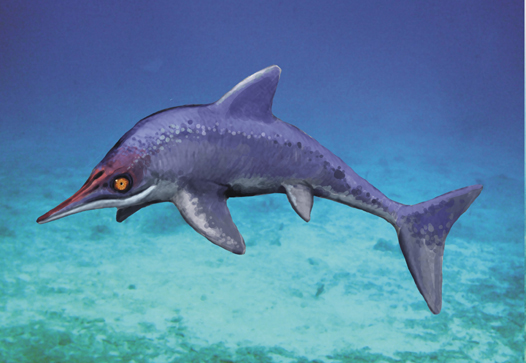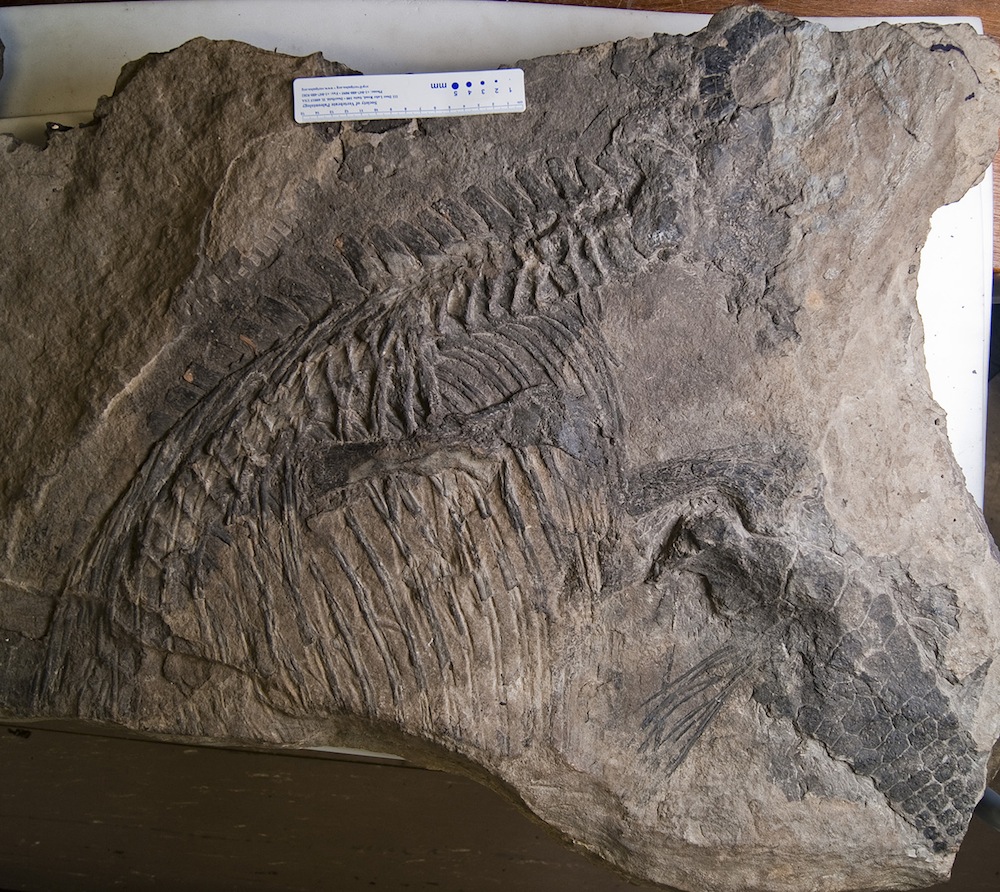'Out of Time' Fossil Reveals Ancient Ocean Diversity

A fossil that once lined a mule track in Iraq has revealed the surprising survival of a group of ichthyosaurs, marine reptiles that swam the seas more than 66 million years ago.
Researchers had previously believed that ichthyosaurs declined throughout the Jurassic Period, which lasted from 199 million to 145 million years ago, with the only survivors rapidly evolving to keep ahead of repeated extinction events. The new fossil, however, dates from the Cretaceous Period, which lasted from 145 million to 66 million years ago. It looks remarkably like its Jurassic brethren, revealing a surprising evolutionary statis.
The fossil "represents an animal that seems 'out of time' for its age," study researcher Valentin Fischer of the University of Liège in Belgium said in a statement. [Ichthyosaur Images: Photos of a Sea Monster]
Ichthyosaur evolution
Ichythyosaurs were dolphin-shaped swimming reptiles that gave birth to live young. They lived in the oceans at the same time dinosaurs were tromping around on land. Previously, researchers thought only one group of ichthyosaurs, called ophthalmosaurids, made it out of the Jurassic into the Cretaceous. The newly named fossil, dubbed Malawania anachronus, is a Cretaceous survivor that does not belong to the ophthalmosaurids, however. That means a "ghost lineage" of ichthyosaurs survived alongside the ophthalmosaurids, changing very little over millions of years.
The fossil in question was first found in the 1950s by British petroleum geologists, who noticed the slab being used as a stepping stone on a mule track in Iraq. The geologists rescued the fossil and took it to the United Kingdom, where it stayed unstudied until the 1970s. Because researchers didn't know where in the rock record the fossil had come from, they struggled to determine its age. (Layers of earth build up over time, meaning, in a general sense, the oldest layers will be on the bottom and the more recent layers more toward the surface.)
Dating the fossil
Sign up for the Live Science daily newsletter now
Get the world’s most fascinating discoveries delivered straight to your inbox.

Modern technology made dating the mysterious fossil possible. Jeff Liston of National Museums Scotland was able to sample the stone slab and found pollen, spores and other microfossils that helped pinpoint the place and time of fossilization. The result, reported Tuesday (May 14) in the journal Biology Letters: The fossil out of time came from the Early Cretaceous.
The resulting ichthyosaur family tree suggests these marine reptiles stayed diverse into the Cretaceous, only to go mysteriously extinct 95 million years ago.
"This 'living fossil' of its time demonstrates the existence of a lineage that we had never even imagined," Fischer said in a statement. "Maybe the existence of such Jurassic-style ichthyosaurs in the Cretaceous has been missed, because they always lived in the Middle East, a region that has previously yielded only a single, very fragmentary ichthyosaur fossil."
Follow Stephanie Pappas on Twitter and Google+. Follow us @livescience, Facebook & Google+. Original article on LiveScience.com.

Stephanie Pappas is a contributing writer for Live Science, covering topics ranging from geoscience to archaeology to the human brain and behavior. She was previously a senior writer for Live Science but is now a freelancer based in Denver, Colorado, and regularly contributes to Scientific American and The Monitor, the monthly magazine of the American Psychological Association. Stephanie received a bachelor's degree in psychology from the University of South Carolina and a graduate certificate in science communication from the University of California, Santa Cruz.









